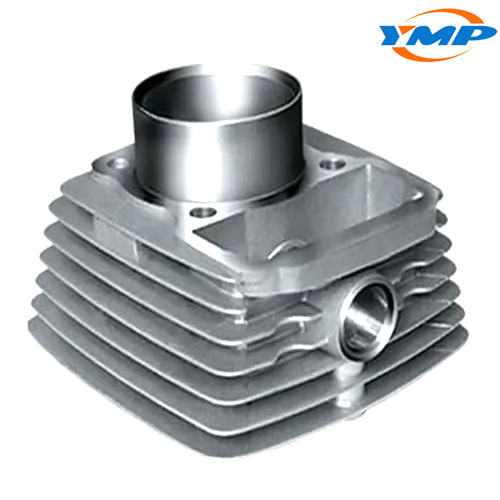With the increasingly advanced industrialization development process, the development of the automobile industry is also advancing by leaps and bounds. As a cnc numerical control processing factory, the editor will briefly introduce the processing technology of auto parts for you today.
As we all know, the processing technology of auto parts can be simply divided into casting, forging, welding, cold stamping, heat treatment, metal cutting, assembly and so on.
A-Casting
The term "casting" is commonplace in the daily life of the public, and it is a relatively early metal thermal processing technology mastered by human beings. Today, this technology has reached a very high level. In simple terms, casting is a method of pouring liquid into a casting cavity adapted to the shape of the part, and waiting for it to cool and solidify, in order to obtain a part or blank. Generally speaking, the material to be cast is mostly metal that was originally solid but heated to a liquid state, and the material of the mold can be sand, metal or even ceramics. Depending on the requirements, the methods used will vary.

In the automotive industry, the production method "casting" is widely used. Forging is divided into two methods: random forging and physical model forging. "Random forging" is also called "random forging". This is a production method in which metal blanks are placed on iron felts to withstand impact or load, also known as "quenching". The blanks of vehicle turbines and shafts are produced and processed by random forging. Solid model forging is a production method in which the metal material blank is placed in the cavity of the forging die to withstand impact or compound. Model casting is a bit like the process of batter being rolled into cookies in a mold.
B-forging
"Forging" is a processing method that uses forging machinery to exert pressure on metal blanks to cause plastic deformation to obtain daggers with certain mechanical properties, certain shapes and sizes, and is one of the two major components of forging (forging and stamping) . Forging can eliminate defects such as as-cast porosity produced in the metal smelting process and optimize the microstructure. At the same time, due to the preservation of complete metal flow lines, the mechanical properties of forgings are generally better than castings of the same material. For important parts with high loads and severe working conditions in related machinery, forgings are mostly used, except for plates, profiles or weldments that can be rolled with simpler shapes.
In the automobile industry, many parts are made of pig iron, accounting for about 10% of the net weight of the vehicle, such as cylinder liners, gearbox housings, steering system housings, rear axle housings, brake system drums, various brackets, etc. Sand molds are generally used in the production of iron castings.
C-welding
Electric welding is a production method in which two metal materials are locally heated or simultaneously heated and stamped. Generally, one hand holds a mask, and the other hand holds an electric welding tongs or welding wire connected to a cable. The welding process is called manual arc welding, but manual arc welding is rarely used in the automotive industry, and it is most widely used in car body production. The most important thing is welding. Welding is suitable for welding cold-rolled steel sheets by electric welding. In actual operation, two electrodes are used to pressurize two thick steel plates to make them stick together, and at the same time, heat and melt the current flow at the meeting point to make a firm and tight connection.
D-cold stamping
Cold die or sheet stamping die is a production method in which a sheet of metal material is cut or formed under force in a stamping die. In daily life, stew pots, lunch boxes, washbasins, etc. are all made by cold stamping. The auto parts produced and processed by cold stamping mold include: auto engine oil pan, brake system bottom plate, auto window frame and most body parts. Such parts are generally formed by blanking, punching, bending, reverse edge, trimming and other processes. In order to better produce cold stamping parts, it is necessary to make stamping dies.
E-heat treatment
The heat treatment process is a way to reheat, insulate or cool solid steel to change its structure to meet the application or technical standards of the part. The temperature of the heating environment, the length of the holding time, and the speed of the cooling efficiency will cause different structural changes in the steel. Heat treatment is to artificially infiltrate the heated cast iron into water and cool it rapidly. It can improve the strength of aluminum parts, which is also a case of heat treatment process.
F-Metal Cutting
Metal material turning production processing uses milling cutters to drill metal material blanks step by step; so that the product can obtain the desired product appearance, specification and roughness. The turning production and processing of metal materials includes two methods: milling and machining. Milling is a production method in which employees use hand-made tools for cutting. The operation is sensitive and convenient, and it is widely used for installation and maintenance. Processing and manufacturing rely on CNC lathes to realize drilling, including turning, planing, milling, drilling, grinding and other methods.
G-Assembly
According to certain regulations, various components are connected to each other to form a complete vehicle. Whether it is a component or a complete vehicle, it needs to cooperate and relate to each other according to the requirements of the design drawings, so that the components or the complete vehicle can achieve the set characteristics. Make sure that the axis of the gearbox keyshaft and the axis of the crankshaft are pointing. This core method is not adjusted by the installer (miller) during assembly, but can only be adjusted by design and manufacturing.
The above is the relevant process of auto parts processing compiled by the editor for you. For details, please feel free to contact us!